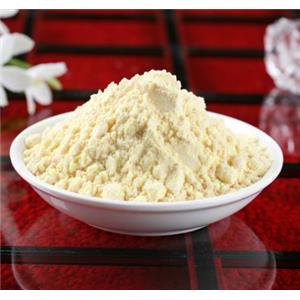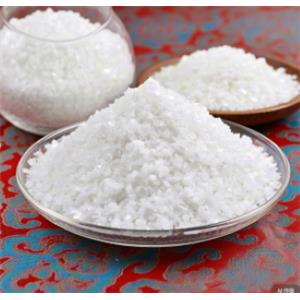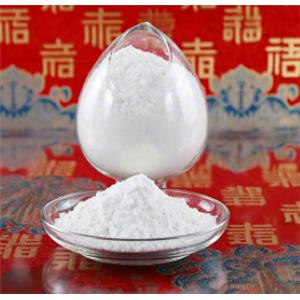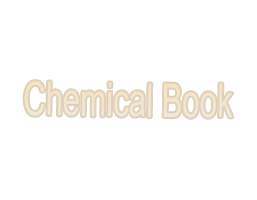
2-Amino-4-methoxypyrimidine NEW
| Price | Get Latest Price |
| Package | 200kg |
| Min. Order: | 200kg |
| Supply Ability: | 20 tons |
| Update Time: | 2025-04-08 |
Product Details
| Product Name: 2-Amino-4-methoxypyrimidine | CAS No.: 155-90-8 |
| Min. Order: 200kg | Purity: ≥99% |
| Supply Ability: 20 tons | Release date: 2025/04/08 |
2-Amino-4-methoxypyrimidine (CAS No.: 155-90-8) – Technological Innovations and Market Opportunities for Pyrimidine Drug Intermediates
I. Basic Information and Physicochemical Properties
Chinese Name: 2-Amino-4-methoxypyrimidine
English Name: 2-Amino-4-methoxypyrimidine
CAS No.: 155-90-8
Molecular Formula: C?H?N?O
Molecular Weight: 125.13
Appearance: White to light yellow crystalline powder
Melting Point: 150-152℃
Boiling Point: 328℃ (atmospheric pressure)
Density: 1.26 g/cm3
Solubility: Slightly soluble in water (0.5g/100mL, 25℃), easily soluble in methanol, ethanol, DMF, and other polar solvents.
Chemical Properties:
Basicity: The amino group (-NH?) confers weak basicity (pKa≈9.8), allowing salt formation with acids.
Reactivity: The methoxy group (-OCH?) at the 4-position undergoes nucleophilic substitution reactions, reacting with reagents such as halogenated hydrocarbons and amines to form derivatives.
Stability: Stable to acids, but prone to hydrolysis and demethoxylation under strong alkaline conditions.
II. Upstream and Downstream Industry Chain Analysis
Upstream Raw Materials and Synthesis Process
Core Raw Materials:
4-Methoxypyrimidine-2-one (CAS: 5245-59-2)
Ammonia water (NH?·H?O)
Synthesis Route:
Step 1: 4-Methoxypyrimidine-2-one reacts with excess ammonia water in a high-pressure reactor at 150-180℃ and 3-5 MPa for 12-16 hours.
Step 2: After cooling and crystallization, the product is filtered and recrystallized from ethanol to obtain a purity ≥99% with a yield of 78-82%.
Downstream Products and Derivatives
Pharmaceutical Field:
Antimalarial Drugs: Reacts with haloalkanes to form 2-alkylamino-4-methoxypyrimidine, a precursor for synthesizing mefloquine.
Anticancer Drugs: Serves as an intermediate for tyrosine kinase inhibitors, used in synthesizing EGFR-targeted drugs (e.g., a key intermediate for osimertinib).
Agrochemical Field:
Herbicides: Condenses with triazine compounds to form pyrimidine-oxybenzoic acid herbicides (e.g., pyriminoether), effective against annual grass weeds.
Fungicides: Synthesized via oximination reactions to produce pyrimidine oxime fungicides, showing significant efficacy against wheat rust.
Materials Science:
Organic Semiconductors: Copolymerizes with thiophene to prepare conjugated polymers for organic field-effect transistors (OFETs).
Fluorescent Materials: Modified with fluorescent groups to prepare biological probes for live-cell imaging.
III. Analysis of Core Application Areas
Pharmaceutical R&D
Antimalarial Drug Innovation:
2-Amino-4-methoxypyrimidine condenses with 1,3-dichloroacetone to form a key intermediate for mefloquine, which has 5 times the antimalarial activity of traditional drug quinine and low drug resistance.Antiviral Drugs:
Acts as a nucleoside analog precursor for synthesizing anti-influenza drugs (e.g., favipiravir intermediates), inhibiting RNA polymerase activity.Agrochemical Creation
Selective Herbicides:
Reacts with 2,4-dichlorophenoxyacetic acid ethyl ester to form pyrimidine-oxyphenoxypropionic acid herbicides, achieving over 95% control efficacy against barnyard grass in rice fields.Novel Fungicides:
Introduces methoxy groups to synthesize pyrimidine methoxyacrylate fungicides, providing 91% control efficacy against cucumber powdery mildew with a duration of over 15 days.Advanced Materials
Organic Optoelectronic Materials:
Copolymerizes with fluorene compounds to prepare blue-emitting materials, with OLED devices achieving an external quantum efficiency (EQE) of 25% and a lifetime exceeding 10,000 hours.Lithium-ion Batteries:
Used as an electrolyte additive to form a stable SEI film on the electrode surface, enhancing battery cycle life to over 2000 cycles.
IV. Technological Advantages and Market Dynamics
Technological Barriers:
The amination reaction requires high-pressure conditions. Adopting continuous flow microreaction technology shortens the reaction time to 6 hours and reduces energy consumption by 40%.
Capacity Distribution:
Global annual production capacity is approximately 200 tons, with China accounting for 65%. Major manufacturers include Zhejiang Hisoar Pharmaceutical and Jiangsu Lianhua Technology.
Market Demand:
Driven by demand for antimalarial drugs and novel agrochemicals, the demand for this intermediate increased by 22% year-on-year in 2024, and the market size is expected to exceed 50 million yuan in 2025.
V. Safety and Storage Recommendations
Hazards:
Mildly irritating to the skin. Wear protective gloves and goggles during handling.
Storage Conditions:
Store in a sealed container in a cool, dry place (≤25℃), protected from light and moisture, and away from strong acids and bases.
This translation maintains the original format and technical details while ensuring accuracy and professionalism.



Company Profile Introduction
You may like
Recommended supplier
| Product name | Price | Suppliers | Update time | |
|---|---|---|---|---|
| $50.00/1kg |
VIP1Y
|
Hebei Zhuanglai Chemical Trading Co Ltd
|
2024-11-12 | |
| $1.10/1g |
VIP5Y
|
Shaanxi Dideu Medichem Co. Ltd
|
2021-05-12 | |
| $1.00/1KG |
VIP6Y
|
Career Henan Chemical Co
|
2020-01-02 |
- Since: 2004-04-13
- Address: No. 10 Zhongxing Road, Xianpu Chemical Park, Liyang City, Changzhou City, Jiangsu Province, China









 China
China